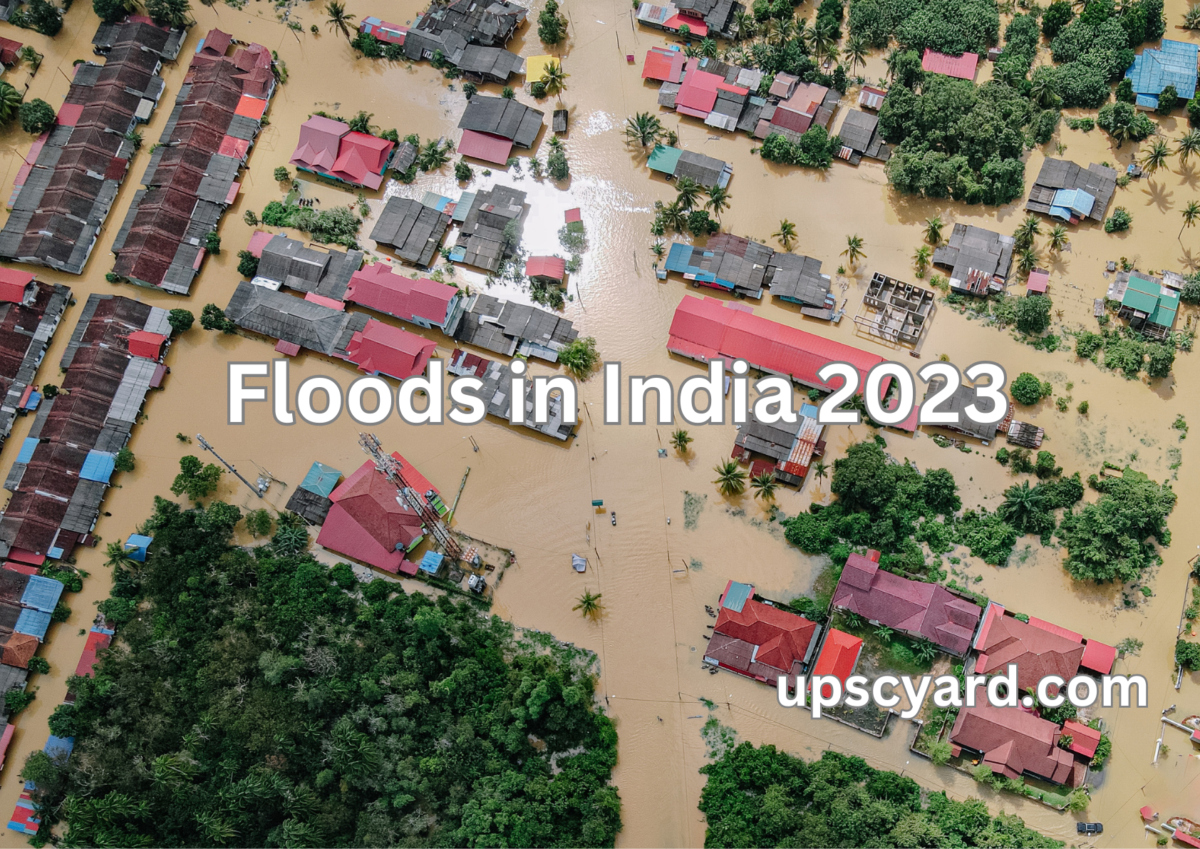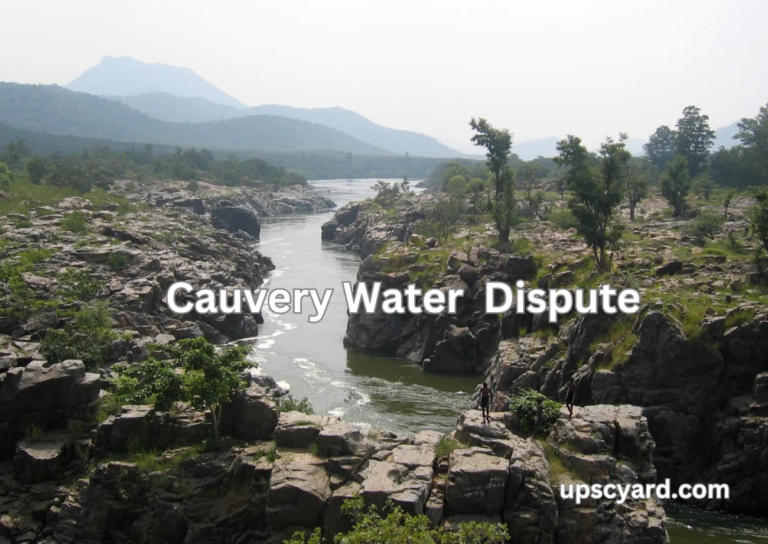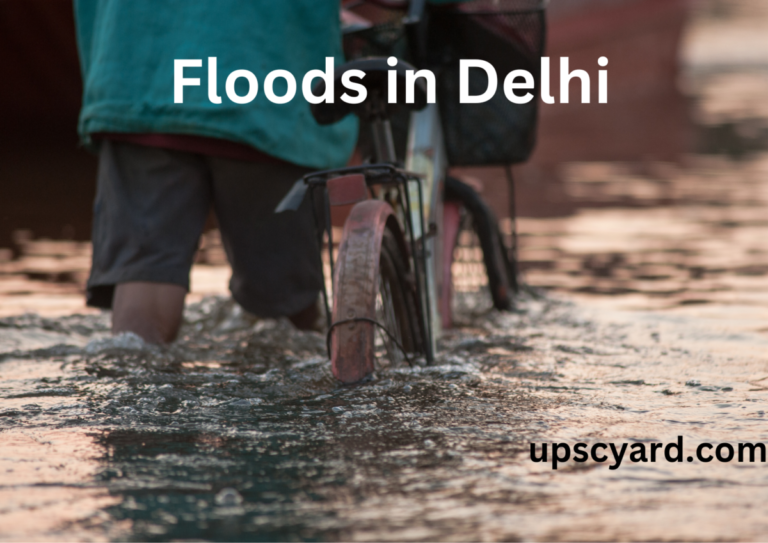Floods in India
India is currently witnessing a sequence of severe rainfall occurrences leading to extensive devastation, including landslides, flash floods in india , and loss of life in multiple regions across the country. The patterns and intensity of rainfall are being influenced by several elements, such as the monsoon season, the western disturbance, the El Nino-Southern Oscillation (ENSO), the Indian Ocean Dipole (IOD), and the impacts of climate change.
What are the factors contributing to the occurrence of heavy rainfall in India?
- Interaction between the monsoon and western disturbance leads to heavy rainfall in North India.
- North India has experienced a surge in monsoon activity, resulting in excess rainfall of 2% across the country.
- Northwest India has witnessed a significant excess rainfall of 59%, while peninsular India and east/northeast India have faced rainfall deficiencies of 23% and 17%, respectively.
- Synoptic conditions resembling past floods and the impact of climate change contribute to heavy rainfall events.
- Orographic lifting in hilly areas like the Himalayan foothills and Western Ghats intensifies rainfall.
- Flash floods and cloudbursts are challenging to predict, requiring radar systems and monitoring of vulnerable areas.
- Changes in land use and development activities can exacerbate the severity of flash floods in india.
- Factors affecting rainfall in India include the monsoon, western disturbance, El Nino-Southern Oscillation (ENSO), Indian Ocean Dipole (IOD), and climate change.
- The Thar desert, Himalayas, temperature, and pressure changes over oceans influence rainfall distribution.
- The western disturbance affects northwestern India during winter and can interact with the monsoon trough during summer, impacting rainfall patterns.
- ENSO and IOD modulate rainfall by altering atmospheric circulation and moisture transport over the Indian Ocean, Arabian Sea, Bay of Bengal, and the southern part of the Pacific Ocean.
- Climate change affects rainfall by changing temperature, humidity, pressure, wind, and cloud patterns, potentially delaying or advancing the monsoon onset and intensifying extreme weather events.
- Climate change also impacts orographic rainfall through changes in snow cover, glacier melt, and soil moisture over the Himalayas and Western Ghats.
The issue of urban floods in India
Urban flooding transpires when precipitation surpasses the drainage capacity of urban infrastructure, including sanitary sewers, leading to the inundation of developed areas, particularly in densely populated regions. This phenomenon can transpire irrespective of whether affected communities are situated in designated floodplains or near bodies of water.
The people who are living in the khadar and bangar region of river are facing temporarily migration into camps . the problem is that why the government allowed the settlement in river native specified region.
Management of Flood in India
Authorities involved in managing floods in India include:
- India Meteorological Department (IMD): The IMD provides forecasts for rainfall and cyclonic events, serving as crucial information for all agencies involved in flood planning.
- National Disaster Management Authority (NDMA): The NDMA, reporting to the Prime Minister’s Office (PMO), coordinates disaster response efforts. The National Disaster Response Force (NDRF) collaborates with state counterparts to carry out relief and rescue operations.
- Central Water Commission (CWC): The CWC is responsible for collecting hydrological data at the national level. This includes monitoring river discharge and water levels in dams to provide timely warnings to states regarding potential flooding.
- National Institute of Disaster Management (NIDM): The NIDM operates under the Union Ministry of Home Affairs (MHA) and works towards enhancing disaster management capabilities and promoting research and training in the field.
These authorities play crucial roles in flood preparedness, response, and mitigation efforts in India.
NDMA Guidelines
Non-Structural Measures
- Floodplain zoning is a crucial measure that controls land use and reduces flood damage by avoiding habitation in flood-prone areas and identifying evacuation locations.
- Floodproofing strategies involve building flood shelters on elevated ground, ensuring the availability of essential supplies like food and fodder, protecting communication lines from flooding, and maintaining uninterrupted medical services during floods.
- Community participation is promoted through initiatives such as the “Aapda Mitra” program by the NDMA, which trains and mobilizes community volunteers in the most flood-prone districts to assist in rescue and rehabilitation efforts during floods.
Structural measure
- Constructing reservoirs, conducting dam inspections, and implementing other structural measures can effectively store excess water during periods of high discharge, mitigating the impact of floods in india.
- Diverting floodwater to wetlands, natural and man-made channels, and other designated areas helps alleviate the destructive effects of flooding by redirecting the water away from populated regions.
- Protective walls and embankments act as flood control structures, preventing floodwater from overflowing into inhabited areas and providing vital flood protection.
- Desilting and dredging activities are employed to enhance the carrying capacity of water channels, reducing the likelihood of spillage and enhancing floodwater management.
- Implementing watershed management practices, such as tree planting, in the catchment areas helps establish vegetation cover, reduce erosion and runoff, improve soil permeability, and effectively address sudden surges in water flow.
Mains Question | floods in india
Q. “Explain the importance of structural and non-structural measures in flood control and management. Discuss how the construction of reservoirs, dam inspections, embankments, diversion of floodwater, and watershed management practices contribute to mitigating the impact of floods. Provide examples to support your answer.”




